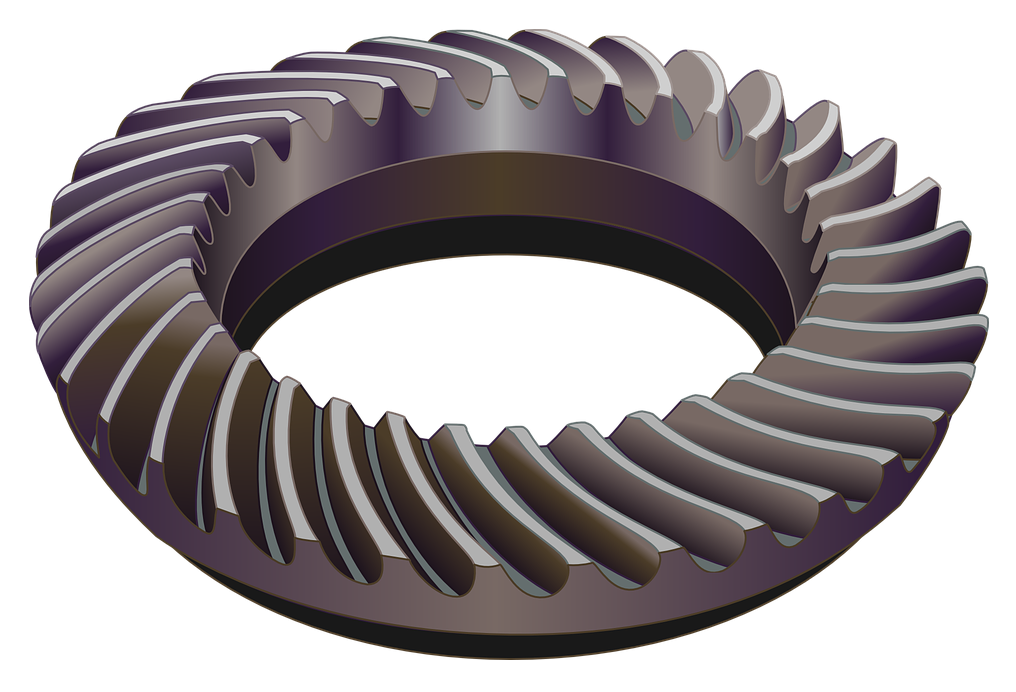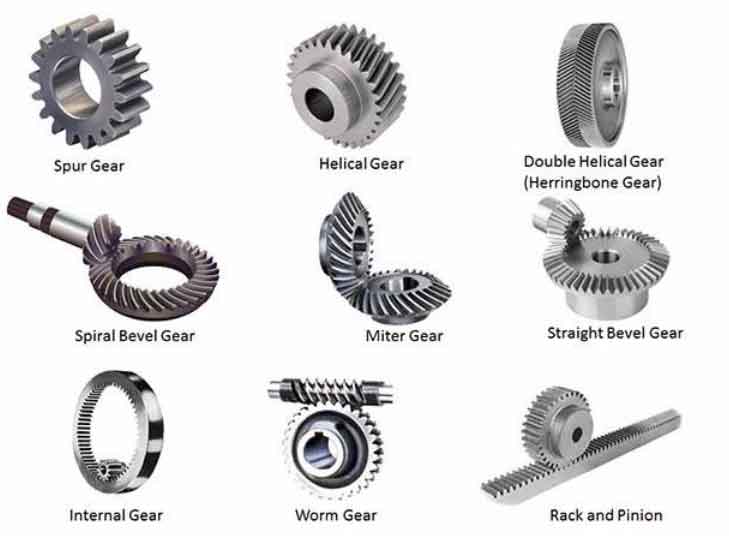Product Description
Super Gear
Standard: ISO, GB, JIS, DIN, AGMA and non-standard.
Module: 0.2~10.
Outer diameter: 10~800mm
Material: Carbon steel, stainless steel, plasitc, POM, aluminium alloy, bronze, brass.
Surface treatment: Carburizing, hardening and tempering, nitriding, high frequency treatment, black of oxidation, zincing, nickelage.
Machine: CNC engine lathe, milling machine, drilling machine, hobbing machine, grinder, gear shaper, testing center.
Competitive price & prime quality & best service & timely shipment.
1) guarantee excellent workmanship,
2) Small order accepted
3) OEM offered.
We had built our reputation on our expertise, quality and service. We offer a complete line of services to meet the needs of the export market.
We also providing our customers with remarkable OEM solutions to meet a variety of requirements. We believe our product quality and price will be able to enlarge your competitive power in your market.
Welcome to send us your product drawings for quotation.
Small quantity order is acceptable.
| Application: | Motor, Motorcycle, Industry |
|---|---|
| Hardness: | Hardened |
| Manufacturing Method: | Cast Gear |
| Toothed Portion Shape: | Spur Gear |
| Material: | Cast Iron |
| Type: | Circular Gear |
| Samples: |
US$ 10/Piece
1 Piece(Min.Order) | |
|---|
| Customization: |
Available
| Customized Request |
|---|
How do spiral gears handle variations in tooth engagement during operation?
Spiral gears are designed to handle variations in tooth engagement during operation effectively. The unique helical tooth arrangement of spiral gears allows them to accommodate these variations and provide several benefits. Here’s how spiral gears handle variations in tooth engagement:
- Gradual Engagement: One of the key advantages of spiral gears is their ability to achieve gradual tooth engagement. As the gears rotate, the helical shape of the teeth allows them to come into contact gradually, starting from one end of the gear to the other. This gradual engagement minimizes the impact and shock that would occur with sudden full tooth contact in other gear types. It results in smoother and quieter operation, reducing noise, vibrations, and stress on the gear system.
- Increased Tooth Contact Area: Spiral gears provide a larger tooth contact area compared to straight-cut or spur gears. The helical tooth profile extends the contact length along the gear face, distributing the load over multiple teeth at any given moment. This increased contact area enables spiral gears to handle higher loads and transmit torque more efficiently.
- Load Sharing: Due to the helical arrangement, spiral gears naturally distribute the load across multiple teeth. This load-sharing characteristic helps to minimize tooth wear and fatigue. As the gears rotate, different teeth come into contact, ensuring that the load is distributed evenly. This load sharing capability enhances the gear system’s durability and extends its service life, particularly in applications with fluctuating loads.
- Reduction of Side Thrust: Spiral gears generate an axial thrust force during operation. However, by using pairs of spiral gears with opposite helix angles, this side thrust force can be greatly reduced or even eliminated. When paired gears with opposite helix angles mesh together, the axial thrust forces cancel each other out. This eliminates the need for additional thrust bearings or complex gear arrangements to counteract the axial forces, simplifying the gear system design.
- Improved Lubrication: The helical tooth profile of spiral gears promotes better lubrication. The continuous sliding motion between the teeth creates a pumping action that helps distribute lubricant along the tooth surfaces. This improved lubrication reduces friction, heat generation, and wear, enhancing the overall efficiency and longevity of the gear system.
These features of spiral gears—gradual engagement, increased tooth contact area, load sharing, reduction of side thrust, and improved lubrication—make them highly effective in handling variations in tooth engagement during operation. Spiral gears are commonly used in various applications such as automotive transmissions, industrial machinery, and power generation systems, where smooth and reliable power transmission is crucial.
What are the benefits of using spiral gears in high-torque applications?
Spiral gears, also known as helical gears, offer several benefits when used in high-torque applications. These advantages make them well-suited for transmitting large amounts of torque efficiently and reliably. Here are the key benefits of using spiral gears in high-torque applications:
- High Load Capacity: Spiral gears are designed to handle high loads and transmit significant amounts of torque. The helical tooth arrangement allows for load distribution across multiple teeth, reducing stress concentration on individual teeth. This design feature enables spiral gears to withstand the heavy forces encountered in high-torque applications.
- Smooth and Efficient Power Transmission: The helical shape of the teeth in spiral gears enables smooth and continuous contact between the mating gears. This gradual tooth engagement results in reduced impact and vibration during gear meshing. Additionally, the helical tooth profile minimizes sliding friction, leading to efficient power transmission and reduced energy losses, which is particularly important in high-torque applications where power efficiency is crucial.
- Reduced Noise and Vibration: The gradual tooth engagement and improved contact pattern in spiral gears contribute to reduced noise and vibration during operation. The helical tooth arrangement helps to distribute the load more evenly, minimizing dynamic forces and resulting in quieter gear operation. This is especially beneficial in high-torque applications where noise reduction is desired, such as precision machinery or noise-sensitive environments.
- Axial Thrust Compensation: Spiral gears can be designed with opposite helix angles on mating gears, which helps cancel out the axial thrust generated during gear meshing. This feature is particularly advantageous in high-torque applications where managing axial forces is critical. By eliminating or reducing the axial thrust, spiral gears simplify the gear design and reduce the need for additional components, such as thrust bearings.
- Reliability and Durability: The robust design of spiral gears, combined with their ability to handle high loads and transmit torque efficiently, contributes to their overall reliability and durability in high-torque applications. The gradual tooth engagement, load distribution, and reduced friction help minimize wear and extend the service life of the gears, ensuring long-term performance under demanding conditions.
These benefits make spiral gears an excellent choice for high-torque applications where reliable and efficient power transmission, smooth operation, reduced noise, and durability are essential requirements.
What are spiral gears and how are they used in machinery?
Spiral gears are a type of cylindrical gears with teeth that are curved in a spiral pattern. Unlike straight-cut gears, which have teeth that are parallel to the gear axis, spiral gears have teeth that are angled or helical. This helical tooth arrangement provides several advantages in terms of performance and noise reduction.
Spiral gears are commonly used in machinery for various applications due to the following reasons:
- Smooth and Quiet Operation: The helical tooth arrangement of spiral gears enables gradual tooth engagement, resulting in smoother and quieter operation compared to straight-cut gears. The angled teeth allow for gradual contact, reducing noise and vibration during gear meshing.
- Increased Load Capacity: The helical tooth design of spiral gears distributes the load over multiple teeth, increasing the load-carrying capacity. This makes spiral gears suitable for applications that require high torque transmission and heavy-duty operations.
- Improved Efficiency: The helical tooth arrangement of spiral gears helps in minimizing sliding friction between the teeth. This results in a higher level of efficiency compared to straight-cut gears, as there is reduced power loss due to friction during gear operation.
- Axial Thrust Compensation: Spiral gears can be designed with opposite helix angles on mating gears, which helps in canceling out the axial thrust generated during gear meshing. This feature eliminates the need for additional thrust bearings, simplifying the gear design and reducing complexity.
- Versatility: Spiral gears can be manufactured in various configurations, including spur, helical, and double helical designs. This versatility allows for their application in a wide range of machinery, including automotive systems, industrial equipment, and power transmission systems.
In machinery, spiral gears are commonly used in applications that require smooth operation, high load capacity, and efficient power transmission. Some examples include gearboxes, automotive differentials, machine tools, and heavy-duty industrial machinery.
Overall, the unique tooth geometry of spiral gears makes them a preferred choice in many machinery applications, offering improved performance, reduced noise, and enhanced load-carrying capabilities.
editor by CX 2023-12-07





